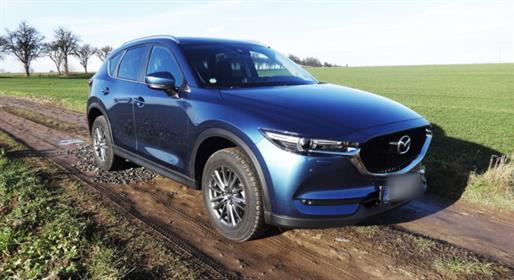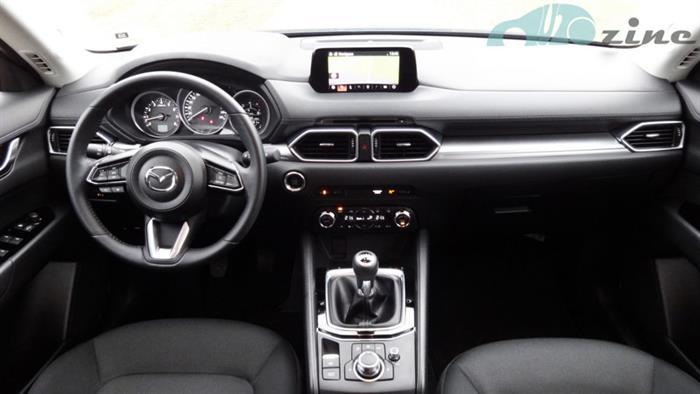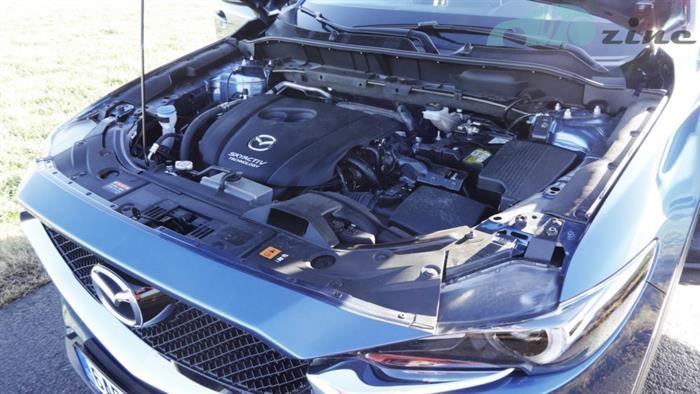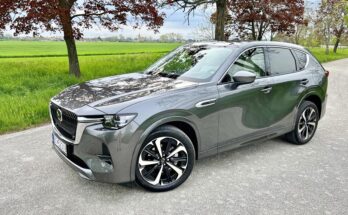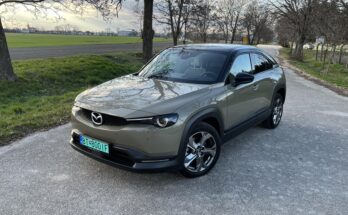This time, the modernized Mazda CX-5, the second generation of this popular car, passed the editorial test.
The new Mazda CX-5 continues to belong to the category of medium-sized compact SUVs.
The current second generation still has the same wheelbase, so it could be argued that it is just a successful facelift.
In reality, this is not the case. The fifth has undergone significant changes and redesigns, which are evident, for example, in the chassis or in the sound insulation of the car itself.
The second generation of the five really succeeded, it now has a more elegant and predatory impression than the first generation.
One of the other things we like about Mazda as a car manufacturer is its refusal to downsize (reducing engine volume) and its loyalty to engines of classic volume.
We have currently tested a representative of the naturally aspirated four-cylinder two-liter with a power of 118 kW in combination with a manual six-speed gearbox and all-wheel drive.
EXTERIOR
The exterior design of the second generation has become quite rough. The CX-5 rides on the wave of the brand's current design, which I like very much.
The front part now has significantly smaller lights, which are sharply cut and discreetly wedged between the chrome edging of the lower part of the mask and the hood of the car.
The size of the front headlights contrasts effectively with the rest of the front part of the car.
The mask of the car itself is voluminous, as well as the logo of the brand with which it is equipped.
The lower part of the massive front bumper is complemented by a discreet line with integrated fog light lenses.
The side and rear parts of the car are carried in the spirit of simplicity and compactness.
The heel has a protective coating around its entire circumference, all in a very fine presentation. As part of the rear section, the aforementioned cladding is enlivened by a pair of discreet chrome exhaust tips.
The tested version had seventeen-inch dark painted wheels with relatively high tires, which in the end did not harm the car's appearance in any way. On the contrary, you are indicated in which category Mazda belongs.
INTERIOR
The Mazda has a wheelbase of 270 cm and this, together with the high structure of the body of the SUV category, gives the interior a lot of spaciousness.
The position behind the wheel, including the overall ergonomics of the interior layout, is traditionally excellent. You will get used to Mazda very quickly.
The dashboard itself received a new shape. The instrument panel in front of the driver, its upper part, has a new massive shape. Within the chapel, you will find the classic indicators of the speedometer, tachometer, as well as indicators of the engine temperature, fuel level and information from the on-board computer.
The central part of the dashboard is dedicated to the on-board infotainment display, which controls the navigation, telephone and audio system via the HMI interface on the center panel.
In the central part of the dashboard, you will find the controls for heating the front seats and the steering wheel, as well as the dual-zone air conditioning control, which is followed by the center panel itself, which is equipped with the classic manual transmission selector, now located higher in the second generation. Its shifting paths are short and precise.
Furthermore, the parking brake controls and on-board infotainment controls are located within the center panel.
The armrest is foldable and has storage space and a pair of USB ports.
The steering wheel of the tested version of the Mazda was heated and multifunctional with the ability to control the phone, audio system and cruise control.
The interior of the Mazda is spacious, of course this also applies to the space in the rear seats.
The luggage compartment in the second generation offers 509 liters of volume.
Of course, there is also a storage space under the false bottom of the luggage.
ENGINE AND RIDE
As already mentioned in the introduction, Mazda does not belong to the car companies that follow the path of downsizing, i.e. reducing the volume of the engine and then catching up with the power using a turbocharger.
I personally like this approach. For example, with the previously tested Mazda 6 with a 2.2l diesel engine, we were extremely satisfied with its performance, driving characteristics and, above all, consumption.
The currently tested CX-5 had a 118kW naturally aspirated petrol engine in combination with a six-speed manual transmission.
The expression of the tested gasoline four-cylinder is very refined.
Unfortunately, its downside is its occasional laziness at low revs. Its potential is fully revealed only at higher revs. This position of the motor is not unfamiliar and does not bother him, it is just that it is not always in place from the user's point of view.
What needs to be praised is its quiet operation, and then the start x stop system, the existence of which you hardly know.
Overall, the Mazda CX-5 must be praised for the soundproofing of the interior, with the new model it is a step further.
The driving characteristics of the Mazda are also good, the car is equipped with the G-Vectoring Control system, which plays with the torque when passing a corner and thus tries to prevent the car from understeer.
As part of the editorial test, Mazda's consumption was slightly below 8l.
CONCLUSION
The basic price of the Mazda CX-5 with two-liter petrol, manual transmission, front-axle drive only and the basic Emotion equipment is CZK 560,900.
The version we tested was equipped with Attraction and all-wheel drive, its price starts at CZK 761,900.
The Mazda CX-5 and its second generation is a great-looking car with sharply cut and original features, which is also a joy to drive.
The occasional lack of performance of the tested gasoline version is ultimately balanced by other advantages. So definitely a thumbs up for us.

